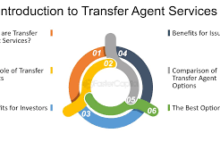Exploring the Future of BPM: Why No security future BPM Could Be a Big Risk

Introduction:
In today’s digital world, the concept of “No security future BPM” is gaining attention, especially among businesses. Many are realizing that a lack of security in Business Process Management (BPM) could put their data and operations at risk. No security means that sensitive information can be exposed to threats, which can lead to major problems.
Having a “no security future BPM” approach can leave companies open to attacks, data loss, and potential business shutdowns. As more businesses embrace BPM for efficiency, it’s crucial to also think about security. Let’s dive deeper to understand the risks, the importance of security, and how to protect business processes for the future.
What Is “No Security Future BPM”? Understanding the Basics
“No security future BPM” refers to a situation where Business Process Management lacks important security protections. BPM is a system many companies use to manage their operations, from handling data to controlling workflows. But without security, this system can be weak against online threats and hackers.
In simpler terms, if BPM doesn’t have security, it’s like leaving your house doors wide open. Anyone could enter, cause harm, or steal important things. For businesses, this could mean data leaks or disruptions in day-to-day activities. Ensuring BPM has strong security features is essential to keep everything safe.
When there’s no security in future BPM, even regular tasks could be at risk. Hackers might exploit weak spots, making it vital for businesses to understand the value of securing their BPM systems. Knowing what “no security future BPM” means can help teams take the first steps toward better protection.
Why Security in BPM Matters More Than Ever

As technology grows, businesses rely more on digital solutions like BPM. But with more digital tools comes the need for stronger security. Without it, sensitive data and processes can be exposed to risks, which can impact the entire business operation.
No security in future BPM could lead to severe issues like data loss or costly downtime. These problems not only affect daily operations but also harm a company’s reputation. When clients know their information is safe, they trust a company more. So, securing BPM is also a way to build trust with customers.
In today’s world, cyberattacks are common, and attackers are always looking for weak points. That’s why companies must take the security of BPM systems seriously. By investing in security, businesses can avoid many risks and ensure their processes run smoothly without interruptions.
Risks of a “No Security” Approach in Business Process Management
Choosing a “no security future BPM” path can expose businesses to several risks. First, without protection, valuable data can be stolen or lost. This can include customer information, financial records, and business strategies, all of which are critical for success.
Here are some risks that a no-security BPM system may face:
- Data Breaches: Sensitive information can be accessed by unauthorized users, leading to potential legal issues.
- Business Disruptions: Without security, systems could be brought down by attackers, interrupting essential tasks.
- Reputation Damage: Customers expect their data to be safe; a data breach could lower trust and impact customer loyalty.
Each of these risks is costly. Companies must consider the consequences of no security and work toward better protection. Ensuring BPM security now can save money and resources later.
Best Practices to Avoid a No Security Future in BPM

Securing BPM is essential for any business today. There are several best practices that companies can follow to prevent a no-security future BPM and protect their assets. Let’s look at some practical steps that organizations can take to ensure a secure BPM environment.
1. Regular Security Audits
- Checking BPM systems for any weak spots is essential.
- Regular audits can help identify vulnerabilities before they are exploited.
- These audits should be a routine part of a company’s security strategy.
2. Data Encryption
- Encrypting data ensures that even if it’s accessed by unauthorized people, it’s unreadable.
- Data encryption adds an extra layer of security to sensitive information.
- This is especially important for customer data and financial information.
By following these steps, companies can strengthen their BPM systems. Security in BPM is an ongoing process, but these practices can reduce risks and help build a more reliable system for the future.
Securing the Future of BPM: Essential Tips for Businesses
In the long run, building security into BPM systems can save companies from expensive problems. But many businesses are unsure where to begin. For a secure BPM future, certain strategies can guide teams in protecting their systems and data effectively.
Steps for Securing BPM:
- Use Strong Authentication: Strong login processes can prevent unauthorized access.
- Train Employees on Security: A well-informed team is a strong defense.
- Update Regularly: Keep systems and software up to date to patch vulnerabilities.
Each of these strategies contributes to a safer, more secure BPM system. With cyber threats always changing, companies must stay updated and prepared. These tips can help businesses secure their future and maintain a trustworthy BPM environment.
FAQs
Q: What does “no security future BPM” mean?
A: “No security future BPM” refers to Business Process Management (BPM) systems that lack important security protections, putting data and processes at risk of cyber threats.
Q: Why is security important in BPM?
A: Security in BPM is crucial because it protects sensitive data, keeps operations running smoothly, and prevents costly issues like data breaches and system downtimes.
Q: What are the risks of a no-security approach in BPM?
A: Without security in BPM, businesses face risks like data theft, operational disruptions, and potential harm to their reputation and customer trust.
Q: How can companies secure their BPM systems?
A: Companies can secure their BPM systems by implementing data encryption, conducting regular security audits, and training employees on best security practices.
Q: What are some best practices to avoid a no-security future BPM?
A: Key practices include using strong authentication methods, updating systems regularly, and conducting security audits to identify and fix vulnerabilities.
Conclusion:
In the end, security in BPM is something every business needs to think about. A “no security future BPM” can put important data and operations at risk, which no business wants. By focusing on security, companies can protect themselves from attacks, keep their information safe, and continue to build trust with customers. It’s a simple but powerful step that makes a big difference.
Securing BPM isn’t hard if businesses follow some basic steps, like regular audits, using strong passwords, and training their teams. Taking these steps now can save a lot of trouble in the future. With the right security in place, companies can enjoy all the benefits of BPM while staying safe from online threats.





